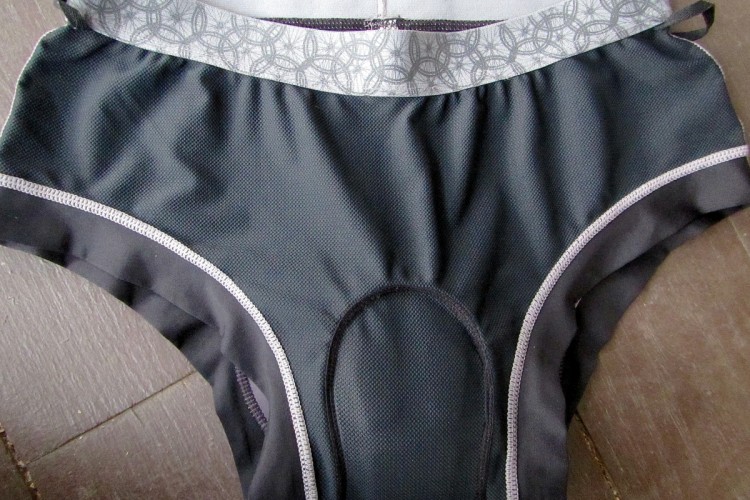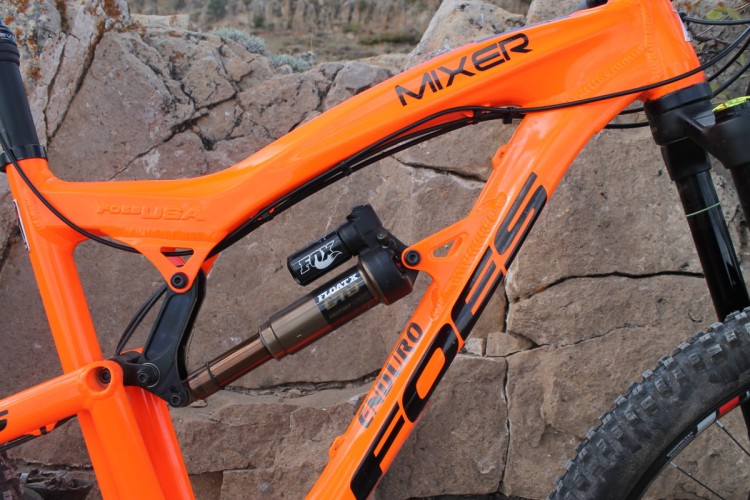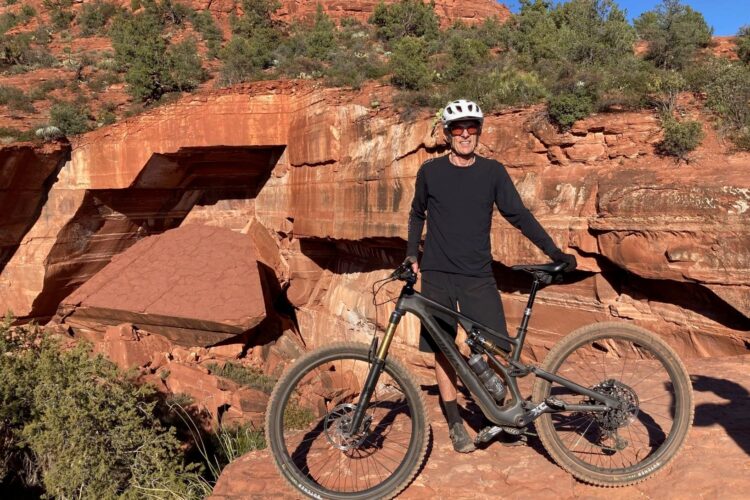
Sick Bicycles are not a normal bike company.
They sell more t-shirts than bikes. They fight fire with fire with the trolls online. They make bikes that are not for everyone, and you can’t just order one stock or from a dealer. They hand build steel hardtails in the UK, but they don’t do custom frames. They mix materials almost as much as their metaphors, their full suspension frames blending titanium, carbon, steel, or aluminum to achieve the perfect balance of strength and flex. They want you to own their bike for life, not until the end of the next season.

And with all of this, Timothy David Allen and Jordan Childs are making and developing some of the most exciting bikes I have seen in a long time. They have extreme geometry (that’s not hyperbole: a hardtail can have a wheelbase of 1.4 meters, or more) for extreme old skool riding.
Don’t like it? Buy another bike. Sick Bicycles are not for everyone, but that mono-focus allows them to build some truly special bikes.
Fittingly for a bike brand that is known for its social media as much as its bikes, I met Tim and Jordan online after selling them a tiger proof rock and some tire inserts. I had seen snippets and heard the name “Gnarpoon,” but Sick Bicycles wasn’t on my radar, yet. The EWS had just visited Millau and a semi-privateer had just piloted one of their prototype hardtails far higher up the results than common sense would have allowed a hardtail to go.
It was punk, it was raw, and Sick Bicycles had my attention.
After a failed Kickstarter, they turned to what they knew: self-funding development through sales of limited edition hand printed tee-shirts. They tested their extreme geometry ideas through hardtails, but from the beginning, longer travel suspension frames were always the plan: long-legged bikes for the kind of riding best described as dicking around in the woods.
Very quickly, a titanium and carbon full suspension super-bike (the Have Blue) surfaced. It was successfully tested and received positive press, before being shelved. It relied on eastern carbon fibre manufacture, and as such, suffered from the lack of environmental waste management of the by-product produced by the less regulated nature far eastern manufacture. This did not sit well with Tim and Jordan, hence the difficult decision to mothball the project.
However, the Have Blue (named after the stealth bomber’s development code name) garnered a lot of interest in its short time in the sun, so plans were put in motion. A UK carbon manufacturer was found, and the project revived.
This journey is indicative of Sick Bicycles: ambitious plans for large scale manufacture of accessible, high-performance bikes but not at the expense of environmental or ethical concerns, all framed with an ultimate ambition to return as much of the manufacturing to UK shores as possible. They sell hardtail frames, tee-shirts, luggage, and courier bags that are all made in the UK, but pragmatically and only when it makes sense.
Sick Bicycles are not your normal bike brand: they have a personality, and that guy might not be for you. Taking their fair share of flack online, but instead of ignoring the “it wont climb, it will never work“ comments, they call the trolls out and better them at their own game. They also have the dubious honor of having received a cease and desist order from Kanye West’s lawyer–true story.
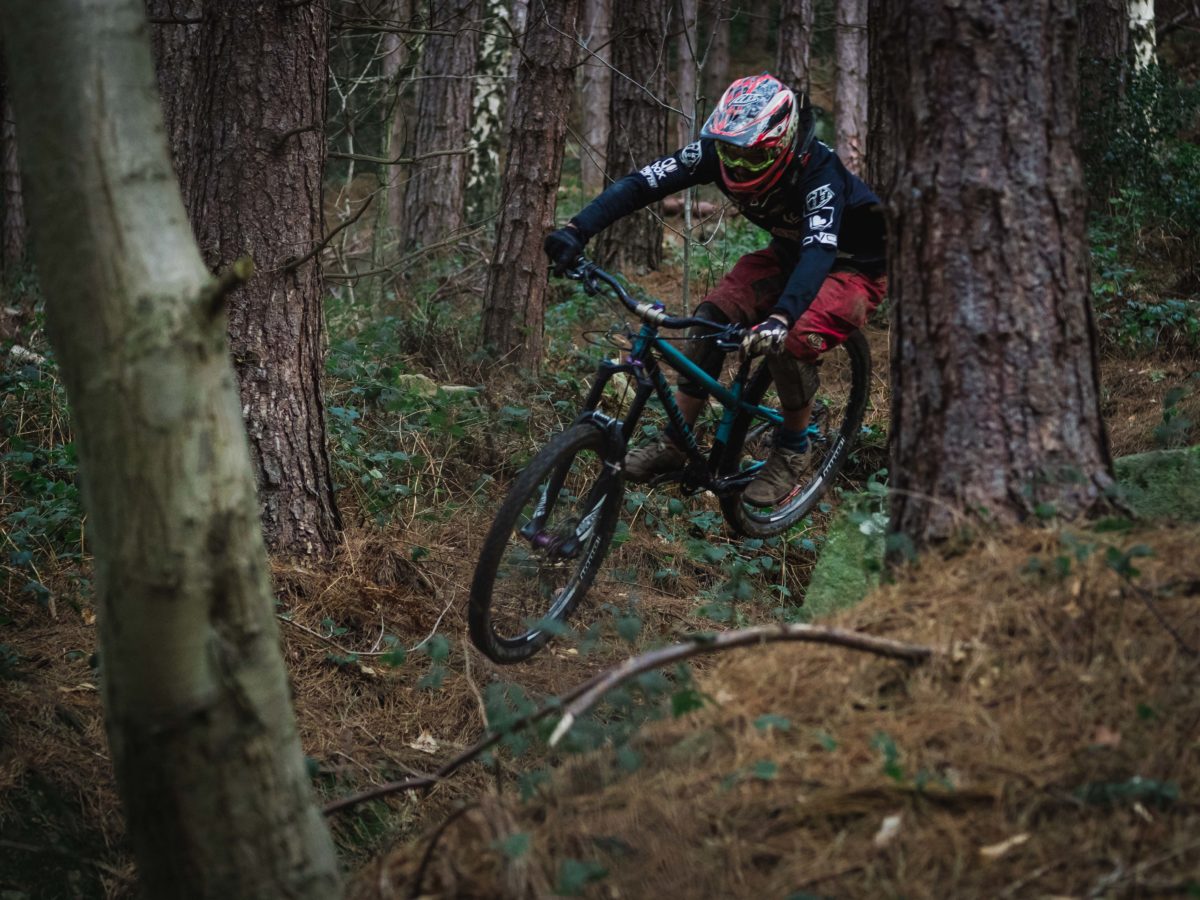
After one year, they have a range of hardtails and three suspension frames in development, each with a different suspension platform, including the radical and reverential Heathen.
Whilst looking backwards at what has inspired them (Brooklyn Machine Works being an obvious influence), they are not afraid of new technology. Gearboxes and additive manufacturing (3D printing), as well as more conventional processes, all come together to make bikes where form follows function.
So at the onset of year two, I put some questions to them to see whats next.
Callum Kellie, Singletracks: What led you to start a bike company? With the recent growth in boutique builders, if you wanted a specific bike for you, why buy a cow for a pint of milk and start a bike company?
Jordan Childs, Sick Bicycles: Well if anyone would buy a cow for a pint of milk it would probably be me and Tim.
But it wasn’t that there isn’t any good bikes available, I think the reason we really did it was to see if we could. It was almost like a dare, to be honest. Now we are really just struck on a development cycle where we are kinda more interested in testing theories than selling bikes. It’s pretty exciting to push the envelope with design. Now we know we are starting to streamline things, we are enjoying the last bit of truly out-of-the-box thinking. It’s fair to say we might be restricted on that going forward.
Singletracks: What have you and Tim tried to bring to bike building from your past work and life experiences? How has a background in Tattoos and Toyota shaped how you’re building Sick?
Sick Bicycles: Well I worked for 3M not Toyota (that frequently gets muddled up) but I’m a big fan of the “Toyota Way.” I’ve mostly had a background in consultancy, making companies more competitive by being efficient and driving down waste. Our business has to be lean, we don’t have capital, so we have to ride the lightning quite often to keep innovating. This means not drawing a wage and reinvesting, working for free is draining, but not on something you love.
The excitement of prototyping and the highs and lows keeps me going significantly. We’re friends working together. If me and Tim can’t handle something, Lee, Zam, or Bry will know how to. I own and operate a tattoo studio. In this respect, I guess my acumen for running a team and non-standard, clear and open marketing probably natively comes to me. I like bikes, I like tattoos and tattooing, but I’m not particularly keen to have them define me.
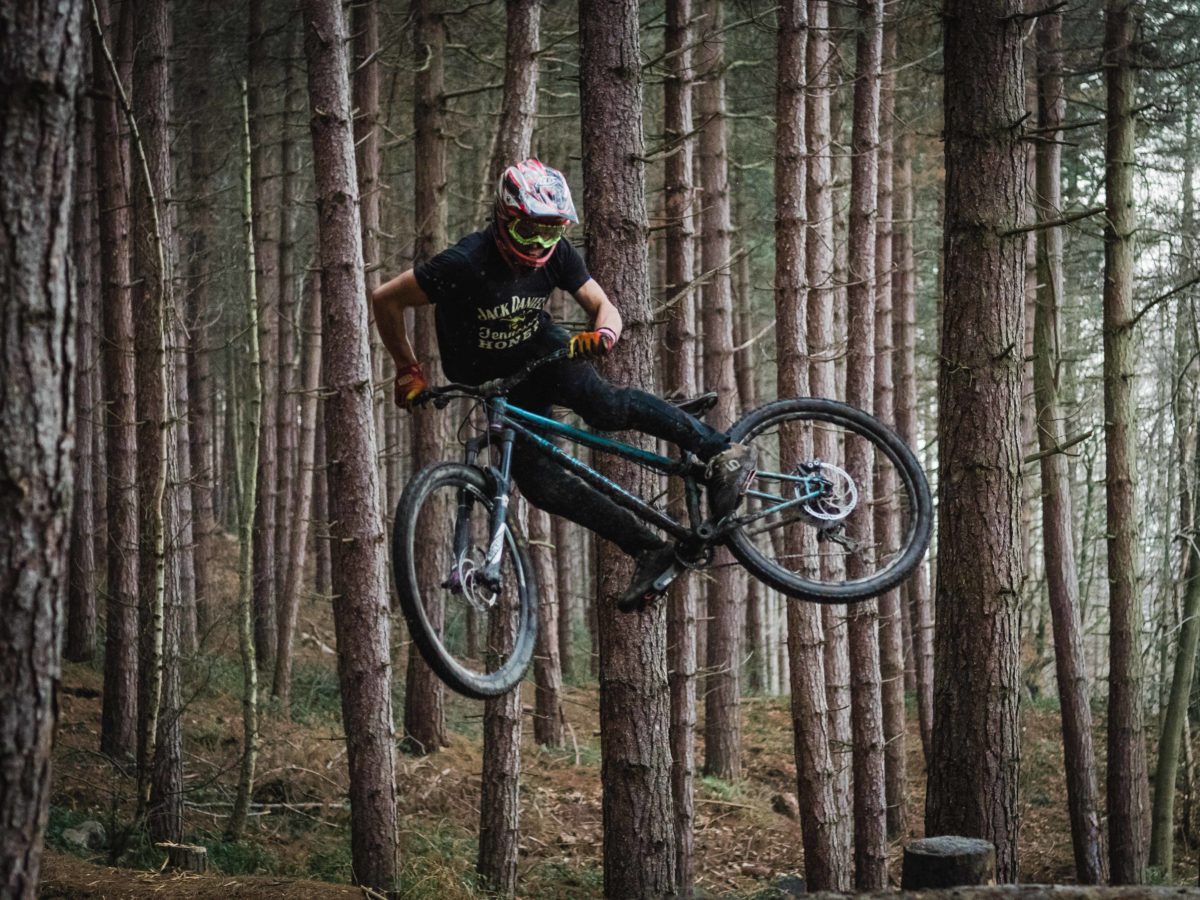
Singletracks: In the UK there are a number of what are essentially very skilled “men in shed” bike companies. Some are a little larger–Shand Cycles, for example. But Sick seems to be trying to make it clear that whilst the hardtails are made by one of these builders, that is not who you are or what you’re aiming to be. What is the ambition?
Sick Bicycles: I have no interest in standing ’round in coveralls with a cup of tea telling everyone who will listen that I am an artisan. The media loves that gritty image. I think Hope Tech have shrugged that off so they can get taken seriously on the world stage. I’d like to be a global leader in a decade, to be big enough to step down and let someone run the minutia, so me and Tim can innovate, raise our families, and ride in peace is the goal. At the same time, I don’t want to downplay the cottage industry in the UK, the things we/they can do here. The progression in products that lead the industry often starts at the bottom, and people WILL pay for that bespoke craft. It’s not my vision. I’m not coming for their business, but we are here to stay.
Singletracks: I come from an art school background, and within fine art and design there is a differentiation between making and building. Making is experimental and testing: it generates knowledge and experience. Building starts with a plan, and what you have at the end matches the plan. Building normally follows making but not always. Does that sound familiar from year one?
Sick Bicycles: Yeah I think it’s pretty apt! We are detail-orientated and curious people. We want to know the limits, so we take things there, sometimes at great personal cost. At the moment we very much make bikes. Until there is cohesion in the brand, then we are not truly building. We’ve been making bikes 7 months, we’ve been careful, but I think we’ve been underestimated as chancers, or lucky. But no one is that lucky.
Singletracks: All business enterprises need initial capital to develop product, marketing, and buying inventory. Often startups use savings, bank loans, outside investors, or all of the above. Have you guys used any of these traditional revenue generators or has it all been tee-shirts and frame sales?
Sick Bicycles: We fund the business forward by selling garments or out of our own monthly [salaries] from our day jobs. Many projects have been pure financial loss ongoing, some have required us to sell our old bikes and components to fund. It’s certainly been a year of bootstrapping. I’m not against investment, but we’ve not even had any real offers. I guess it’s just working fine, or investors feel we are too volatile, or we are not valuable enough to want to retain and control. With special projects like the HB, LUXE or DFA, customers have paid upfront for the prototypes at cost price to have the right to retain the finished item down the line. We are lucky in that respect.
Singletracks: Some people have found your approach to social media… abrasive, shall we say. I feel that Sick is a brand that has a personality, and it is this “personality” that helps align riders with the brand. Would you say that is a fair assessment, and how much of the brand’s online persona is representative of its founding fathers?
Sick Bicycles: People find everything abrasive at the moment; the internet gives people a voice to disagree just to be heard. People are comfortable with the very fake customer service and business models eBay / Amazon etc. employ, but it’s an iron fist in a velvet glove–make no mistake, those guys are monsters. I’d prefer to be honest with people even if that means we will clash heads. I’ve grown weary of it though because I can’t stand dull repetition. After a year of it, I’ve really heard it all again and again. I totally respect the Mike Sinyard and Gary Fishers of this world–they were renegades and hellions back in the day. Later on, they just made it pay the bills. MTB was road riding’s wild sibling. Now, not so much.

Singletracks: You have also been increasingly vocal about environmental and ethical factors steering business decisions, even if it contradicts previous actions. What influences the decision making processes for how projects develop and what you make?
Sick Bicycles: I think if you are worried to contradict yourself you are treading a bad path. We each force each other not to be stubborn. We can admit we are wrong and progress on a path contrary to where we started if it’s the right thing to do. We both have strong environmental concerns, the implications were very wide, the media tried to make light of “silly boys hating carbon whilst everything is bad” when we never implicitly said carbon. We even went into detail about paper waste and QC rejects.
We are very young in the industry. We have been pretty knee jerk in the past because we are passionate about protecting our sport. In the end, it’s a case of lead by example because, as a generalization, turns out the consumer base actually doesn’t care at all. So for us, we don’t want to clean up and chase other companies. We have our own business to run, and we’ll run it as clean as we can, we don’t even bother to shout about it.
Singletracks: The brand has always been very upfront online in terms of demystifying the bicycle industry and your ambitions to use UK-based manufacturing as much as possible, but also pragmatically. How do you find the suppliers and fabricators that you work with, and couldn’t this possibly constrain your growth in the future?
Sick Bicycles: I think in real terms there is a disconnect with what riders SAY they want and what they can afford. Our end goal is to have a significant portion remaining in the UK. But our best-selling products are lower priced, that’s economics for ya. So people are vocal about their choices but then you get to the checkout, it’s how much do you want to pay? We will split lower priced frames offshore and retain home production. Which is quite frankly vanity. I want to always have a physical hand in things, we all do.
Singletracks: Ok, now for the elephant in the room: Brooklyn Machine Works. They are a pretty big influence. Influence is something that is not very common in the bike industry, but if you were a metal band, no one would bat an eye lid. Have past exploits shaped your outlooks on homage and reverence and how that translates into bikes?
Sick Bicycles: There is a deep-rooted respect for several brands: Rotec, Karpiel, Brooklyn, and Spooky. These brands were the offshoot from the main industry, did they produce the best race bikes? Nah. Did they make beautiful living breathing monuments to excess? Well, you know the answer.
I mean, you can’t put it any better than the metal band analogy, when people bring up plagiarism, like in music. I usually bring people’s attention to one of the earlier innovators that they missed as they’ll accuse us of copying X, when we were really influenced by Y. And you can only slice the pie so many ways. If you make a single pivot bike, there are a few ways of making it work, when its steel too? Well it’s going to look a certain way. People said the Gnarpoon looked like the Shan 05, well, duh, PP are our friends. I loved that bike, but its identical as long as you agree geometry and travel have no effect on a bike… that a frame is managed only by superficial similarities. We all know it’s not true.

Is it fair we get a hard ride over that when people are riding Chinese catalog bikes that have only had the decals changed brand to brand? That everything is still using the same horst link 4 bar? It seems if you do something enough it’s no longer plagiarism. Is the Heathen a modern retelling of the Brooklyn Race Link? Well Yes. Is it ok to have a homage to your heroes should you have the chance? Well… would you?
Singletracks: Now, speaking of bikes. You have Blue, Gnarpoon, and Heathen 3–very different bikes with totally different silhouettes. Is this a theme we can expect to continue, or can we expect to see a consolidation of frame styles to one that will be recognizably Sick, in the same way that Orange’s and Evil’s bikes are instantly recognizable
Sick Bicycles: No, I’m afraid you will see that variety disappearing. Consistency is something that customers REALLY want even if they don’t think they do.
From 2019, convention and silhouette becomes pretty important. We are working way ahead of time to bring things into line. There will be predicable processes now and standards we will adhere to. We already have cohesive dropouts, seat tube diameters, head tube, and BB. Even if the industry is all over the place. We will still have standards and we will fight to keep them relevant for us. Aesthetically, there will be formal rules we stick to.
Singletracks: Mountain biking used to constantly draw influences from outside of itself, but it now feels like it mostly looks inwards in terms of ideas and style. What, if anything, outside of bikes gets you excited enough to try and bring it back in?
Sick Bicycles: Riding bikes outside of competition. Y’know, fun! Making competition bikes is a great engineering challenge and allows you to measure yourself against other brands. I wanna bin that off. We are big fans of skateboarding and BMX. A challenging but relaxed environment with its own aesthetic.

That’s why we wanted to do an event like Raveduro. Bring partying back to riding. Pitch up a tent. Hang out with your mates. Send it into a pond on a BMX with sunburn
Singletracks: The last year has looked like a whirlwind of stretching the envelope of low and slack whilst looking like an Ed Roth painting on a mountain bike. What can we expect in year two, and what are the ultimate ambitions for Sick?
Sick Bicycles: I think we’d like it to be a full time job. Employ an adult to run the numbers and make sure everything is on time in full. Get ourselves dug in to prototyping and testing full time. That’s the dream. Might even happen.

Conclusion
With a recent offering of more affordable hardtails and plans for a matured product range on the near horizon, all the signs point towards Sick Bicycles settling down and becoming a more predictable–and dare I say, a more conventional–bike brand. But I suspect the reality will be more interesting than that, with making cool stuff and getting their hands dirty core to Tim and Jordan’s take on what a bike company should be.
At the metaphorical dinner party of bike brands, Sick will always be the one you wish you were sitting next to, whilst you’re being bored by the guy talking about Super Boost.












